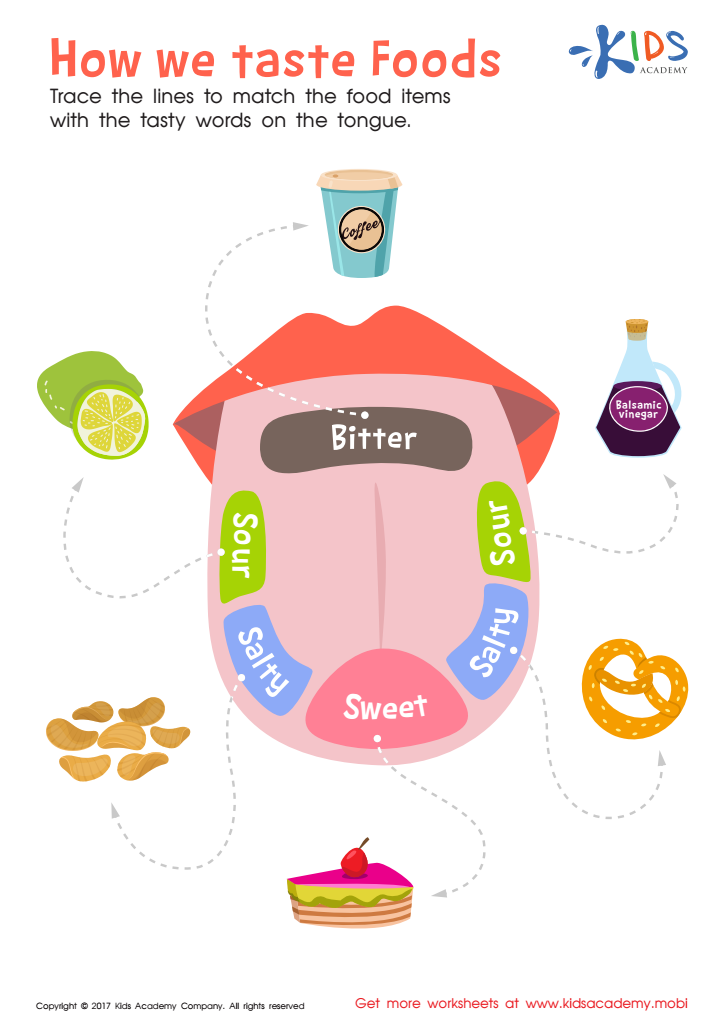Normal The 5 Senses Worksheets for Ages 5-8
12 filtered results
-
From - To
Explore our engaging "Normal The 5 Senses Worksheets" designed for children ages 5-8. These worksheets offer a fun and interactive way to learn about the five senses—sight, hearing, touch, taste, and smell. Perfect for early grade teachers and parents alike, the activities promote essential skills such as observation, comparison, and vocabulary development. Each worksheet includes colorful illustrations and simple exercises that attract young learners’ attention, making the learning process enjoyable. Whether you're in a classroom or at home, our worksheets provide a wonderful opportunity to inspire curiosity and enhance foundational science knowledge. Download and start exploring the senses today!


Explore Your Five Senses Printable


Matter: Assessment 1 Worksheet


Hot or Cold Printable


Observing Properties Worksheet


Can You Hear Me Worksheet


Prickly Nature Worksheet


How We Taste Foods Worksheet


Eye Diagram Printable


States of Matter: Freezing and Melting Worksheet


Healthy Eyes Worksheet


Matter all Around Worksheet


Five Senses Printable
Understanding the concept of "Normal" related to the five senses is crucial for parents and teachers working with children ages 5-8. This age group is at a stage of rapid cognitive and sensory development, where they are learning to navigate their environment and form their understanding of the world.
Caring about this topic helps educators and parents guide children in interpreting and responding to sensory experiences effectively. Teaching children about what is considered "normal" for each sense (sight, sound, touch, taste, smell) allows them to recognize variations, which aids in emotional regulation and social interactions. For instance, discussing what typical smells may be found in different environments helps children manage feelings of discomfort or curiosity when encountering unfamiliar scents.
Additionally, understanding sensory norms can foster empathy among peers, as children learn to be more aware of diverse sensory experiences. This knowledge supports children in communicating their needs and feelings, ultimately leading to enhanced emotional intelligence. By engaging with the five senses, parents and teachers can create more enriching learning environments, helping children build skills that contribute to their overall well-being and future success. Thus, an emphasis on the five senses in teaching and parenting is both beneficial and essential for holistic development.
 Assign to My Students
Assign to My Students

















